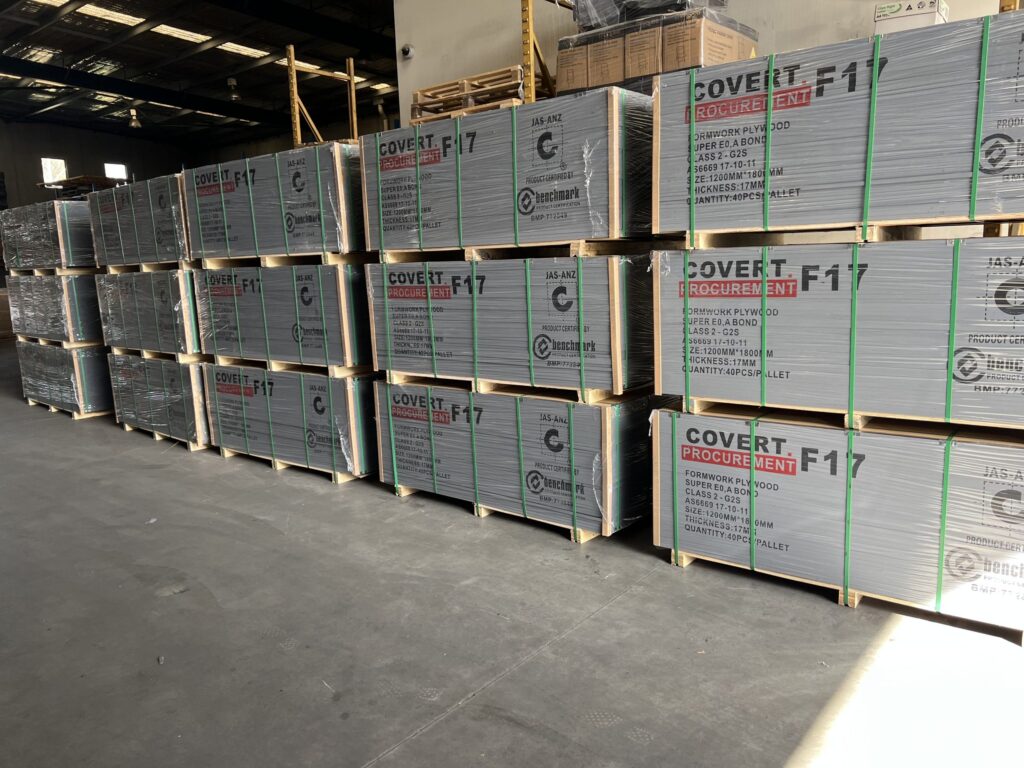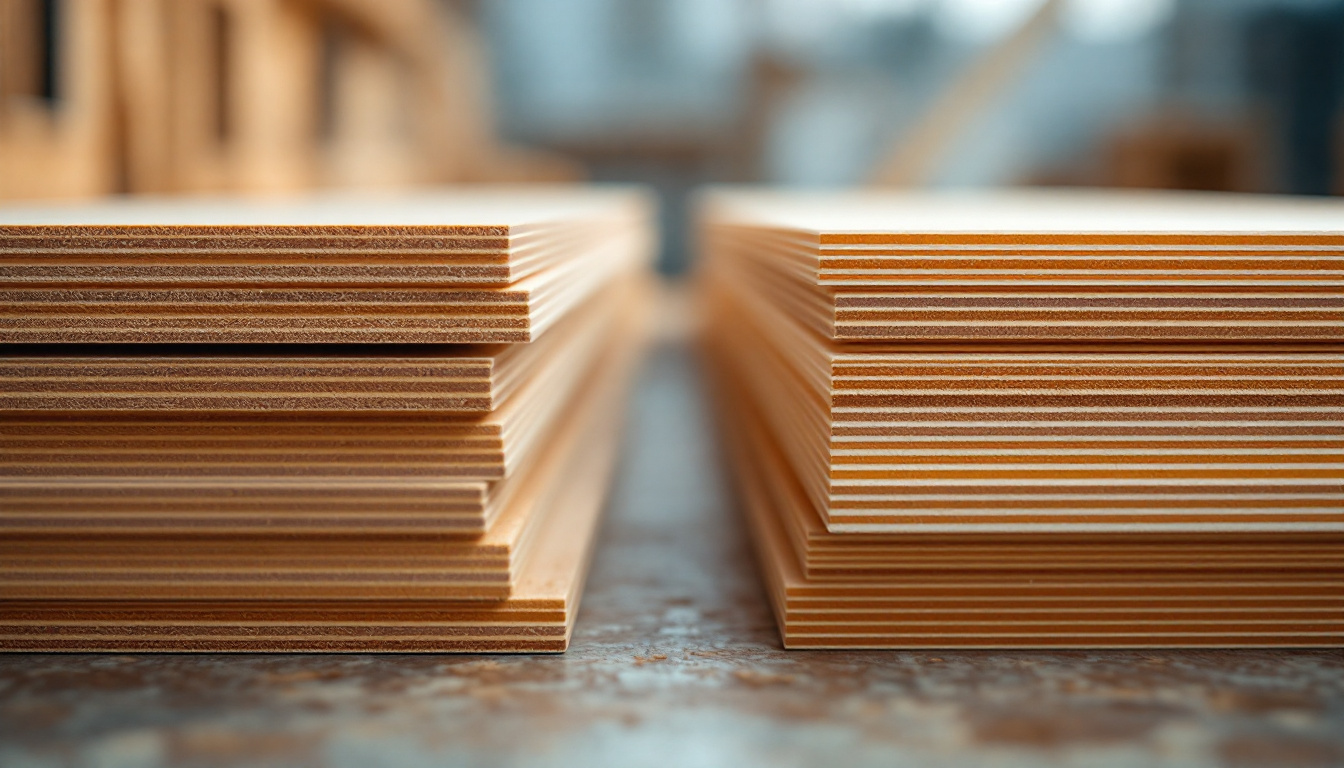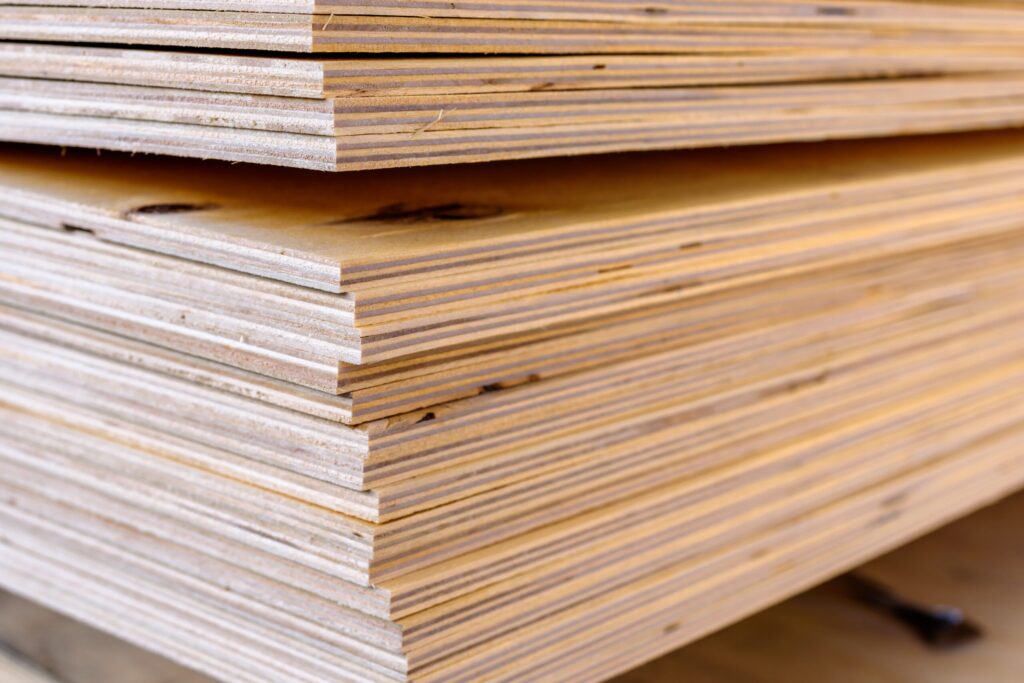When it comes to selecting the right materials for construction and woodworking projects, plywood is often a top choice due to its versatility and strength. Among the various grades available, F14 and F17 plywood are commonly discussed options. Understanding the differences between these two grades is crucial for making an informed decision that suits your specific needs. This article will delve into the characteristics, applications, and considerations of F14 and F17 plywood, helping you determine which is the best fit for your site.
Understanding Plywood Grades
Plywood is categorised into various grades based on its structural integrity and intended use. The grading system in Australia follows the Australian Standard AS/NZS 2269, which assesses the quality of plywood based on factors such as the number of defects, the type of veneer used, and the overall strength of the panel. The F-grade system specifically denotes the structural performance of plywood, with F14 and F17 representing different levels of strength and durability.
What Does F14 Grade Mean?
F14 grade plywood is designed for applications where moderate strength and durability are required. It typically features a combination of hardwood and softwood veneers, providing a balance between cost-effectiveness and performance. The F14 rating indicates that the plywood can withstand a maximum bending stress of 14 MPa, making it suitable for a variety of structural applications.
This grade is often used in residential construction, furniture making, and internal applications where exposure to moisture is limited. Its versatility makes it a popular choice for builders and DIY enthusiasts alike, as it can be easily cut and shaped to fit various projects. Additionally, F14 plywood is often favoured for its aesthetic appeal, as it can be finished in a variety of ways to enhance the visual quality of furniture and cabinetry. The smooth surface of F14 plywood allows for easy painting or veneering, making it an attractive option for interior design.
What Does F17 Grade Mean?
In contrast, F17 grade plywood is engineered for applications that demand higher strength and durability. With a maximum bending stress of 17 MPa, F17 plywood is ideal for more demanding structural applications, including commercial buildings, flooring, and heavy-duty furniture. The construction of F17 plywood typically involves higher-quality veneers and a more rigorous manufacturing process, resulting in a product that can withstand greater loads and stresses.
Due to its enhanced strength, F17 plywood is often used in environments where it may be exposed to moisture or heavy traffic, making it a preferred choice for outdoor applications, scaffolding, and industrial uses. Its robustness ensures longevity and reliability, which are essential in high-stakes projects. Furthermore, F17 plywood is often treated with preservatives to enhance its resistance to decay and insect damage, making it a suitable option for external applications such as decking and cladding. This added durability not only extends the lifespan of the material but also reduces maintenance costs over time, making it a wise investment for builders and architects alike.

Comparative Analysis of F14 and F17 Plywood
When choosing between F14 and F17 plywood, several factors must be considered, including strength, cost, and intended use. Each grade has its unique advantages and limitations, which can significantly impact the overall success of a project.
Strength and Load-Bearing Capacity
The primary distinction between F14 and F17 plywood lies in their strength and load-bearing capacity. F17 plywood is engineered to handle heavier loads and stresses, making it suitable for applications where safety and structural integrity are paramount. In contrast, F14 plywood, while still strong, is better suited for lighter applications where extreme strength is not a requirement.
For instance, if a project involves flooring or structural beams that will support significant weight, F17 would be the advisable choice. Conversely, for internal panelling or lightweight furniture, F14 could suffice, offering a more economical option without compromising too much on quality.
Learn more on: Formply vs Standard Plywood What’s Best for Your Project
Cost Considerations
Cost is often a decisive factor in material selection. Generally, F14 plywood is more affordable than F17 due to the differences in manufacturing processes and the quality of materials used. For budget-conscious projects, opting for F14 can provide substantial savings without sacrificing performance for less demanding applications.
However, it is essential to weigh the initial savings against potential long-term costs. Using F14 in a situation that requires F17 could lead to premature failure, necessitating repairs or replacements that may ultimately exceed the initial savings. Therefore, understanding the specific requirements of the project is crucial for making a financially sound decision.
Application Suitability
Both F14 and F17 plywood have their respective applications where they excel. F14 is commonly used in residential construction, cabinetry, and internal applications, where the risk of exposure to moisture is minimal. It is also suitable for decorative purposes, where aesthetics are important but do not require the highest strength.
On the other hand, F17 plywood is ideal for commercial and industrial applications, where durability and load-bearing capacity are critical. It is often employed in scaffolding, flooring systems, and exterior applications, where it may be exposed to harsher environmental conditions. Read more about environmental on https://www.sph.umn.edu/academics/degrees-programs/4-1-environmental-health/what-is-environmental-health/
Environmental Considerations
In today’s construction landscape, environmental sustainability is a significant concern. Both F14 and F17 plywood can be sourced from sustainable forests, but the manufacturing processes may vary. Understanding the environmental impact of the materials used is essential for making responsible choices.
Sourcing and Sustainability
When selecting plywood, it is advisable to look for products that are certified by recognised sustainability standards, such as the Forest Stewardship Council (FSC) or the Programme for the Endorsement of Forest Certification (PEFC). These certifications ensure that the plywood is sourced from responsibly managed forests, promoting environmental conservation and ethical practices.
While both F14 and F17 plywood can be sourced sustainably, it is essential to verify the certification of the specific product being purchased. This not only helps in reducing the environmental impact but also supports the market for sustainably sourced materials.
Recyclability and Disposal
Another aspect of environmental consideration is the recyclability of plywood. Both F14 and F17 grades can be recycled, but the ease of recycling may depend on the adhesives and finishes used in their production. Water-based adhesives are generally more environmentally friendly and easier to dispose of than their solvent-based counterparts.
When planning a project, consider the end-of-life options for the plywood. Choosing materials that can be easily recycled or repurposed can significantly reduce waste and contribute to a more sustainable construction practice.
Making the Right Choice for Your Project
Choosing between F14 and F17 plywood ultimately depends on the specific requirements of your project. Assessing factors such as strength, cost, application, and environmental considerations will guide you in making the best decision.
Assessing Project Requirements
Before making a decision, it is crucial to conduct a thorough assessment of the project requirements. Consider the load-bearing needs, exposure to moisture, and the overall design intent. For projects with high structural demands, F17 is likely the better option, while F14 may be adequate for lighter, internal applications.
Engaging with a professional or a supplier who understands the nuances of plywood grades can provide valuable insights and help clarify any uncertainties. Their expertise can assist in ensuring that the chosen material aligns with the project’s goals and safety standards. To learn more about uncertainties click here.
Consulting with Professionals
For those unsure about which grade to select, consulting with architects, engineers, or experienced builders can provide clarity. These professionals can offer tailored advice based on their experience and knowledge of local building codes and standards.
Moreover, they can help evaluate the long-term implications of using one grade over another, ensuring that the final decision supports both the immediate needs and future sustainability of the project.
Conclusion
In summary, both F14 and F17 plywood offer unique benefits that cater to different project requirements. F14 is suitable for moderate applications, while F17 excels in high-strength scenarios. Understanding the differences in strength, cost, and application suitability is essential for making an informed decision.

Ultimately, the right choice will depend on a careful assessment of project needs, budget considerations, and environmental impact. By weighing these factors and consulting with professionals, you can ensure that your plywood selection aligns with the goals of your project, leading to successful and sustainable outcomes.

